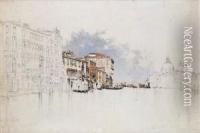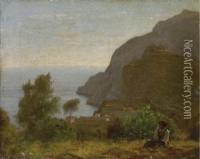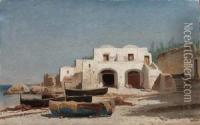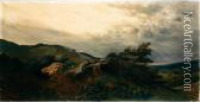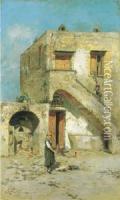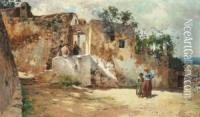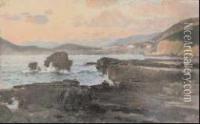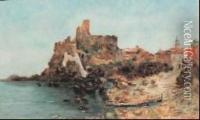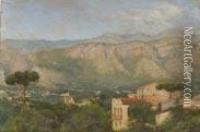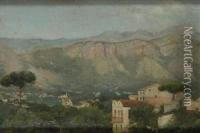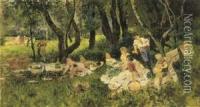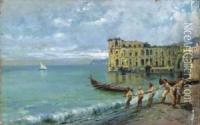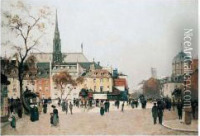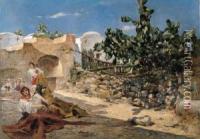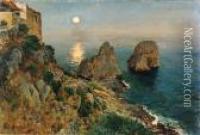Antonino Leto Paintings
Antonino Leto was an Italian painter, primarily known for his landscape and maritime scenes. Born on May 14, 1844, in Monreale, near Palermo, Sicily, Leto displayed a talent for art from an early age. He began his art studies at the Palermo Academy of Fine Arts under the tutelage of the history painter Michele Panebianco. However, Leto later moved away from historical themes to focus on the landscapes and the sea, which would become his signature subjects.
During the 1860s, Leto moved to Naples, which was a hub for artists at the time, and his work started to gain recognition. In Naples, he was influenced by the School of Posillipo, a group of artists who were known for their romantic depictions of the Neapolitan landscape. Leto's early works were characterized by a romantic atmosphere, but as his style developed, he became more interested in capturing the effects of light, particularly the unique Mediterranean light of his native Sicily.
In 1873, Antonino Leto was invited to exhibit at the Vienna World's Fair, and in the following years, his reputation continued to grow. He participated in important national exhibitions in Italy and gained international acclaim. In 1880, Leto settled in Capri, which provided him with endless inspiration for his paintings. The island's rugged coastline, clear waters, and picturesque villages featured prominently in his works.
Leto's technique evolved over the years, and he began to incorporate elements of Impressionism into his paintings, making him one of the precursors of this movement in Italy. His brushwork became looser, and he played with light and shadow to create a sense of depth and atmosphere. Despite the influence of Impressionism, Leto maintained a certain degree of realism in his work, always striving to faithfully represent the scenes before him.
Throughout his career, Antonino Leto remained devoted to the landscape of his homeland, and his paintings often evoke a sense of nostalgia and longing for the beauty of Sicily. He died on June 18, 1913, in Capri. Today, Leto's works are held in various Italian museums and galleries, and he is celebrated as one of the most important Sicilian painters of the 19th century.
